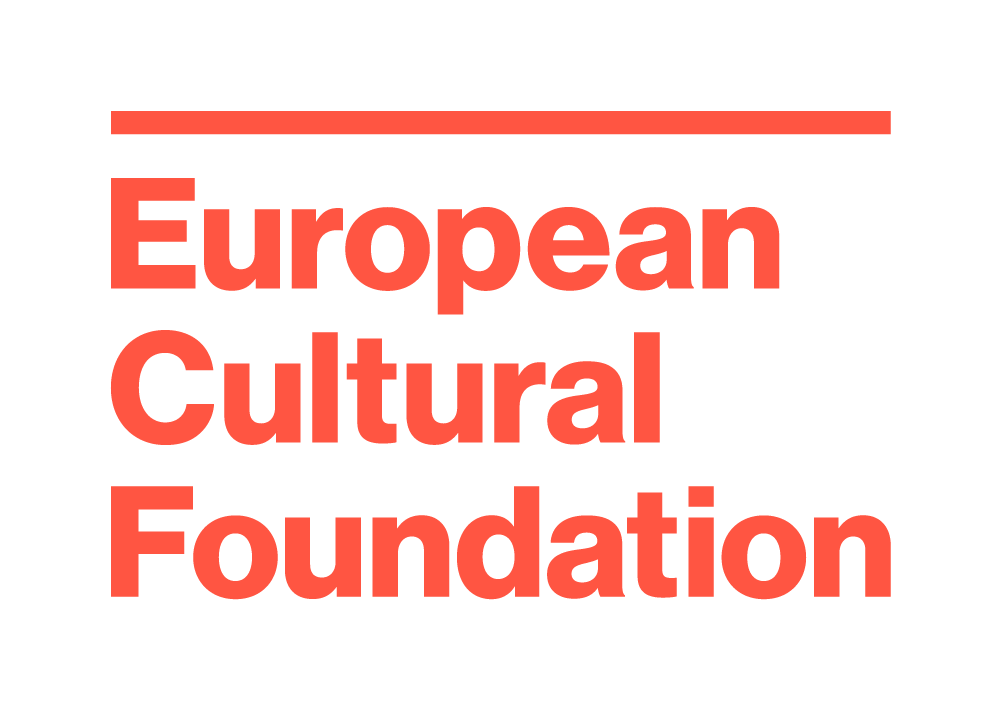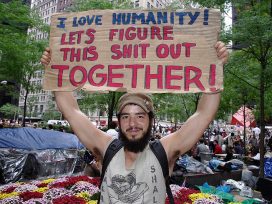Poland is the only post-socialist country with a women’s movement worthy of the name, writes Teresa Kulawik. Should it succeed in establishing a transparent structure that can accommodate compromise, Kongres Kobiet could provide a model for the country’s political system.
Poland is usually associated with the Pope and Catholicism. The generation that grew up with the Iron Curtain no doubt also remembers the opposition movement Solidarity, which paved the way for the fall of the Berlin Wall. But the number who would see Poland as particularly receptive to feminism is certainly few; however, Poland is in fact the only post-socialist country to have generated a women’s movement worthy of the name.
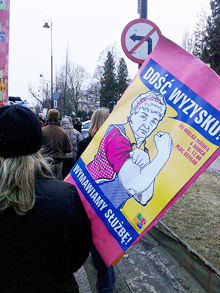
Manifa 2011, Warsaw. Photo: Jakub Szestowicki. Source:Flickr
The Third Congress of Women was held in Warsaw on the 17 and 18 September 2011, shortly before parliamentary elections, and drew almost 7,000 registered attendees. The main hall of Warsaw’s enormous Palace of Culture was too small to accommodate everyone who showed up for the event. I got to sit in the area near the stage reserved for foreign guests. It was a relief to get a seat, but it felt a little odd too. I was born in the country, although I am now both a German and Swedish citizen.
Kongres Kobiet (The Congress of Women) has become the biggest social movement in today’s Poland. The first Congress, in 2009, brought together 3,000 women and ignited a nationwide mobilization. Between then and the fifth congress in June 2013, over thirty regional conferences took place. A countrywide network with ten regional bodies was founded. By using the opportunity for direct democracy that Poland’s legislative process makes available, the women’s movement successfully campaigned for electoral gender quotas. Kongres Kobiet activists collected 150,000 signatures and submitted a civic law proposal to parliament demanding a 50 per cent quota for party lists. Although the law ultimately passed was more modest, there is nothing like success for generating enthusiasm: banners at the third congress proclaimed “Half the power, full wage” and “Vote for women!”
What began as a revolt against the sexism of the celebrations surrounding the twentieth anniversary of the existence of democratic Poland developed into the country’s largest social movement. The formation shapes the independent path of feminism in post-communist Poland. The modern mingles with the hypermodern. Various forces assemble around national congresses in a show of women’s strength in opposition to those in power. At the same time, the national congresses are celebrated as happenings and media spectacles.
The restoration of a masculine order
So, why is Poland the only post-socialist country where women have mobilized in the form of an active social movement? Research shows that social movements germinate in conditions of discontent, but seldom emerge when things are at their worst. Instead, mobilization occurs under conditions that provide opportunities for exercising agency. When hopes and expectations are raised, but then dashed, the ground is prepared for mobilization. Resources are necessary for collective agency to be set in motion, of course, but so is the hope that there will be some success.
There were a lot of reasons for women to be discontent with developments in “free Poland” after 1989. Women in the new democracy lost self-determination as regards their own bodies: the right to abortion on demand that had existed since 1956 was abolished. Abortion became a divisive issue among those who struggled in the opposition movement in the 1980s – and one of the very first initiatives taken by Solidarity’s men in parliament was to amend the abortion law. When the women’s section within Solidarity dissented, its chair was first threatened and then the entire section was shut down. But the women did not simply give up. In the early 1990s, a million people signed a petition for a referendum on the abortion law. The vast majority of Poles were opposed to a restrictive abortion law – but the new powers that be refused. There was a widespread sense of disappointment and powerlessness among women and, this time, the mass mobilization ceased. Focused on surviving “the transition”, most women were preoccupied with things other than fighting for their rights: the “shock therapy” imposed on the country after 1989 – privatizations, large-scale closures of industrial plants and the dismantling of the public sector – hit the women of Poland much harder than men.
That the women’s movement did not arise from the mobilization against the abortion law in the 1990s was also a result of the absence of an accepted language that could articulate the experience of injustice from a gender perspective. The communist dictatorship discredited gender as a political category. Gender equality was perceived as “forced emancipation” and “oppressive egalitarianism”. Western feminism and its strategy of deconstructing femininity were far from appealing. “Feminists were burning their bras while we couldn’t buy them”, was an oft-heard statement that expressed the disparate positions of women in the East and women in the West. But a women’s movement slowly emerged in the 1990s. Gender studies became established at the universities, preparing the ground for activism and feminist expertise. Legendary professor of literature Maria Janion was the nestor of the movement (Kulawik und Ingbrant 2011). The first gender studies centre was established in 1995 at the University of Warsaw, with Malgorzata Fuszara among the founders. The quota law proposed by the Congress of Women originated from her pen. A rapidly growing network of NGOs was established with the support of foreign sponsors and the EU. Journals and information centres were founded. A new Polish feminism had seen the light of day (Fuszara 2005).
The ten-year anniversary of “free Poland” was a turning point for the women’s movement. Gazeta Wyborcza, a newspaper with roots in the Solidarity movement, printed an article in June 1999 that became the Polish feminist manifesto. Agnieszka Graff put into words what until then could not have been expressed. She decoded the symbolic gender order that was the pillar of the new democracy. Graff argues that the common account of how real socialism was an “interruption” in the “normal” history of Poland is actually a gender-coded narrative. In this interpretation, the dictatorship is perceived as feminine rule, a humiliation and domestication of masculinity, a symbolic castration. In fact, the Solidarity movement constituted a masculine rite of passage that would restore the patriarchal order. Men would once again become what they had always been in Poland’s past, according to the national narrative: brave heroes, chivalrous, paterfamilias. Real Men, in other words.
So, what about the women? In the history of Solidarity as it was lived, women played a crucial role that has been excised from the mythology of the movement. Graff refers to research by American scholar Shana Penn, who has shown that the actions of women were decisive for the emergence and success of the opposition movement.
The strike at the Lenin Shipyard broke out because crane operator Anna Walentynowicz, a champion of workers since the 1960s, was fired. The agreement between the striking workers and the communist regime in September 1980 that legalized independent trade unions in Poland would not have happened without the women. The men at the Lenin Shipyard wanted to end the strike with a pay raise – but the women blocked the exits. Along with Henryka Krzywonos, who led the public transportation strike in Gdansk, they exhorted the men to maintain solidarity with the workers in the rest of the country and continue the strike (Wisniewska 2010).
When Solidarity was made illegal again under martial law, women’s underground activities kept the organization going while the men languished in prison. But the women were not allowed to share political power after the fall of communism nor included in the symbolic representation of the movement. Walentynowicz became an anecdote. But the photograph of Lech Walesa scaling the shipyard fence made him first an icon, then president of Poland and a Nobel Prize winner.
The creation of a feminist language
With a sharp and satiric pen, Agnieszka Graff (2001; 2009) highlighted for the first time the contribution of women to the fight for democracy and to finding a way out of the collective amnesia of the Polish public. Ingeniously, she points out the connection between the rendering invisible of real women and the symbolization of the feminine ideal in the picture of the Black Madonna on the jackets of the male heroes. The underlying image is that of Matka Polka, the Polish Mother.
Shana Penn’s book Solidarity’s Secret (2005) makes for fascinating reading and is highly instructive on the subject of the male gaze and the performativity of collective memory. In the early 1990s, Penn began to interview women who were active within Solidarity and was surprised to learn that they played such an important role, yet remained so invisible. One explanation is found in Polish history. There is a long tradition among Polish women of joining underground resistance movements. After the January Uprising of 1863 in Poland was crushed, foreign observers reported that while the men seemed paralyzed, Polish women seemed to “never give up”. But the female warrior is not part of the national mythology, which is the preserve of Matka Polka, the mother, who is supposed to be both strong and self-sacrificing. She is supposed to be able to overcome every hardship, to “stand by her man”, and admire him for his heroic struggle.
She becomes an object of worship, elevated to the status of a national symbol. She is given a kiss on the hand, a perfect rose, a bended knee. But what she cannot demand is recognition. She remains the anonymous heroine – bezimienna bohaterka, a fixed phrase in Polish.
Penn’s research illustrates the crucial role of women in the Solidarity movement and how both the opposition and the glossing over of their work align with the national mythology.
There is a sexist code, risen from the ashes of Romanticism and the aristocracy, which at once enables and denies the contributions of women.
Barbara Labuda, who was active in Solidarity and later became a government minister, states flatly that no one would have respected a movement led by women. She says, “Even if we had told the story, no one would have believed that women ran Solidarity’s underground operations” (Labuda 2003).
Agnieszka Graff’s article and Shana Penn’s research sparked strong reactions and widespread debate in the media. Several of the underground fighters objected to their interpretation, but one of the central figures sided with the feminists: Helena Luczywo. She was head of the biggest underground newspaper and later co-founder and publisher of Gazeta Wyborcza. The debate became feminism’s incursion into Polish mass media, where it now enjoys an established presence in the mainstream. Famous feminist personalities are interviewed or engaged as writers and debaters in many daily and weekly publications, not only Gazeta Wyborcza, although Gazeta was the pioneer. The newspaper supplement Wysokie Obcasy (“High heels”), conceived as a classic women’s magazine, is now a platform for gender and queer issues, with a wide readership.
What makes 1999 a turning point for the Polish women’s movement is not only the entry into mass media, but also the advent of a language that links national Polish experience with a feminist perspective. The reinterpretation of the history of Solidarity is an ingenious approach, since it simultaneously addresses discrimination and confirms the ability of women to act. For the younger generation of Polish women, this is an appealing mix.
Annual public demonstrations, called Manifa, have been held on International Women’s Day (8 March) every year since 2000. The demonstrations are produced in a spirit shaped by that sense of the grotesque acquired over the course of Polish history. Rather than express indignation, the strategy is to ridicule male-dominated society – as if patriarchy was a form of late communism, according to Graff, one of the founders of Manifa.
The uprising of “Second Solidarity”
The 2000s became a decade of growing mobilization and smouldering discontent. Women’s reproductive rights were undermined even beyond the restrictive abortion law. Political populism and unfulfilled expectations of EU support in the work for gender equality were two reasons for women to maintain their resistance. Mobilization increased, extending to demands for social rights, and spread to the public sector.
In 2007, women healthcare workers organized a protest action against low pay and miserable working conditions. They set up a tent city outside the presidential palace for four weeks. The action, called Biale Miasteczko, or “Little White City,” garnered widespread support among the public and the press (Wisniewska 2010). The trade unions received a good press for the first time since 1989 – after which time they were regarded as mainly trying to impede reforms. Issues of social justice and discrimination against women were linked. For the first time, the forces of the old and new Left united.
This was the situation leading up to the first Congress of Women, arranged in conjunction with the twentieth anniversary of democratic Poland. Once again, the trigger was the erasure of women. A commemorative exhibition about the Solidarity movement at the National Museum displayed the familiar picture: the women were not there. The driving forces behind the Congress were Magda Sroda, professor at the University of Warsaw, a leading feminist figurehead and former governmental plenipotentiary for the Equal Status of Women and Men, and Henryka Bochniarz, former government minister and successful entrepreneur.
Today, the Congress of Women brings together women of different generations, of widely disparate social backgrounds, and relatively diverse political convictions. These differences are an asset – and a problem. Or as Agnieszka Graff puts it: “We do not talk about women’s unity; we talk about women’s solidarity.”
Women deliberately chose this language and lined up with the tradition of Solidarity. It was a magical moment at the first Congress in 2009, when Henryka Krzywonos was named the Polish Woman of the Twentieth Century – the tram driver in Gdansk, who looked at the shipyard in 1980 and persuaded the men to keep on striking. She not only stood for continuity with the past, but also for the belief that Polish women “never give up”. She was a heroine with a name.
The organizers were aware of the power of symbols. The movement was more and more often called “Second Solidarity”. The women who gathered for the Congress before the elections in 2011 had big ambitions. Will they live up to the challenge? Will they, once the euphoria has subsided, cooperate across party lines in the daily grind of politics and make a difference in areas like childcare, health care, pensions and low-income jobs, which are important to the majority of Polish women? Actually, this is not up to women alone.
What gives me confidence is that the women’s movement in post-socialist Poland emerged from a profound learning process. The Congress movement brings together people who say they could never have imagined supporting quotas or cooperating with feminists – people who have been successful politicians or entrepreneurs. Many of them support the Congress. On the other side are the former activists in the grass roots movement who have realized that signatures on petitions do not get you very far. It is good news that these two groups are now cooperating. Studies show that the most effective coalitions for implementing women-friendly policies are those between women politicians inside the system and activists who can push and exert pressure from the outside.
I also think something more is needed so that the women’s Solidarity does not become like the first Solidarity – a beautifully wrapped but half-empty box. The point is that there has been a further betrayal that must be brought back from oblivion and worked through. The first Solidarity was based on a coalition of workers and intellectuals, a coalition that toppled the communist dictatorship. But while the workers went to the polls to vote for “their party” and “their government”, the intellectuals had already left the coalition, unilaterally but not openly. Adam Michnik conceded in Stockholm during the anniversary year of 2009 that, for the intellectuals, the coalition ended in 1989. The intellectuals thus felt no responsibility to their voters. They wanted to keep being heroes instead. They were flattered when they were approached by international advisers and invited to play with the Chicago Boys. Instead of taking Solidarity – justice – seriously, they chose to become the avant-garde of neoliberalism.
To prevent this from being repeated in “Second Solidarity”, the transformation process needs to be re-evaluated and squared with the doctrine that the market solves everything. The criticism voiced against Kongres Kobiet has to do with this betrayal and differences among women based on class.
Elzbieta Korolczuk, scholar and Manifa activist, believes that many of the leaders of the congress movement seem to take it for granted that the economic transformation was successful in the main. That everything will be fine if only more women are placed in leading positions in politics, business and academia. But that is not so, in her opinion. For many Poles, the transition was actually a setback. “We need to talk seriously about social justice again”, Korolczuk adds.
Like the gender contract in Poland, the hubris of the intellectuals, that they “knew” and no longer needed to listen to “the people”, is a relic of the aristocracy. Who better than the women’s movement to come to terms with these relics and take demonstrations, the people, and democracy seriously? But comparative studies teach us that it takes two: the critical factor is cooperation between those who mobilize outside the institutions and responsiveness among those who are inside the system.
After the 2011 election
One hundred and ten women took their places in the new Sejm, the lower house. The percentage of women MPs has increased from 20 to 24 per cent, a historic record according to Malgorzata Furzara. There have never been more women in the Polish parliament. The second-best result was achieved in 1980, with 106 women MPs, although that was when the country was still the socialist People’s Republic of Poland. In other words: women have finally overcome the fact that the way out of dictatorship was a male rite of passage. The era of the male hero has come to an end.
Certainly, one might be a tad disappointed that the result is not closer to the 30 per cent line. According to feminist political scientist Drude Dahlerup, women’s representation of 30 per cent can constitute what she calls a critical mass and may be the percentage needed to really make a difference. But, says Fuszara, we should see this as the first step on a road in the right direction instead of grousing. The good news: the populist Law and Justice Party that embraced the masculine ideal fell far short of grasping the reins of governing power.
The quota law itself can partially explain the modest result. It stipulates that at least 35 per cent of the candidates on ballots must be women. But the law says nothing about how the candidates must be ranked and several parties chose to put women at the bottom of the list. The governing party, the liberal-conservative Civic Platform, is the only party to live up to the 35 per cent standard among those elected. Civic Platform has voluntarily followed the rule that at least two of the first five candidates on the ballot must be women. It is the only party that attracted more votes from women than men in the election. This proves that gender matters to women voters! The party’s victory was also historic for another reason: this is the first time a sitting government has been successfully re-elected in Poland since the fall of communism.
The election results are also testimony to the continued flexibility of Polish citizens. The hallmark of political systems in many post-socialist countries is that voting behaviour and the party system are more volatile than in the traditional democracies. One rather surprising outcome of the election was that the new Palikot’s Movement Party won 10 per cent of the votes and became the third strongest party in the country. This is a development for both good and ill. With five women out of a total of forty Sejm MPs, the party has a distinctly masculine character. The good news is that the forty include Anna Grodzka, the first transsexual in the Polish parliament, and gay activist Robert Biedron, the first openly homosexual Sejm MP. Wanda Nowicka was also among the newly elected. She is executive director of the Polish Federation for Women and Family Planning and one of the foremost advocates of women’s reproductive rights in the country. Nowicka was also elected vice-president of the new Sejm.
Palikot’s Movement may have a few surprises in the offing, but the party also contributes something none of the others has dared to: it is challenging the power of the catholic church in public life. Reluctance to clash with the church was the historic compromise of the post-1989 order, a compromise that sacrificed women’s rights. The election outcome proves that women can work with male alliance partners and that, together, they should be able to influence policy.
Taking stock in 2013: What is to be done?
The fifth national congress, which took place in June 2013 in the Palace of Culture and Science in Warsaw, enjoyed high numbers of visitors too. Over 8,000 participants registered. The atmosphere was no longer quite so euphoric. The realpolitik of the last two years had given way to a certain disenchantment. The hopes the leftist feminists pinned on the new Palikot party went unfulfilled. Male self-promotion instead of liberating tolerance won the upper hand. In February 2013, the party chair snubbed in the most sexist manner Wanda Nowicka, the vice-president of the parliament and Palikot party representative, with a view to forcing her to resign. In interview, he speculated that she probably wanted to be raped. However, Nowicka stayed and remains a neutral vice-president of the parliament. Janusz Palikot, who would have had to resign in many countries for making such a remark, got away with his comments scott free. His party now belongs to a new left-centre coalition, formed under the aegis of former president of Poland Aleksander Kwasniewski in advance of the upcoming European elections. Leftist coalition partners for women’s matters have once again shown themselves to be far from reliable.
This episode illustrates a style of politics that, to a considerable extent, shapes Poland’s political system. Instead of discussions and compromises that deal with the issues at hand, this style of politics centres on polarization and personal attacks. This is a problem not only for women’s politics. The track record of the liberal-conservative coalition on policy matters is equally unimpressive from the point of view of women, even if once again, prime minister Donald Tusk insisted on addressing the Congress. This is indicative of his priorities, though the address amounted to an appeasement, since he came empty-handed.
Reproductive rights are high on the congress movement’s list of demands for the government. This concerns above all the scrapping of legal restrictions on abortion as well as the regulation and public financing of in vitro fertilization (IVF). The movement is also strongly in favour of measures that help reconcile the demands of family and working life, like child care facilities and parental leave benefits.
In as far as the government passes bills at all, the resulting policies come across as half-hearted. According to the 2011 law concerning day care centres, it was the responsibility of local authorities to finance such facilities: something that they simply evaded doing on account of their empty coffers. The law concerning parental leave benefits passed in June 2013, which extended the period during which the allowance would be provided to 52 weeks, makes no provisions regarding periods for fathers only. Against the background of the Swedish ideal, regulations concerning fathers’ parental time are considered an important milestone along the way towards equal parenting.
The prime minister had two pieces of bad news to share with the women’s congress. There would be no legal reform concerning abortion in the foreseeable future. And the law sought on same-sex couples would be postponed for the time being. This was no display of ill will but rather a realistic assessment of the current political forces at play.
The proposed legislation on IVF provides a prescient example of why good will alone is simply not enough under the current political and institutional conditions. The proposal was tackled upon the entry of the liberal-conservative coalition into government in 2007 and, after several attempts, still has not passed into law right up to the present day (Kulawik 2011). Two elements have combined here: on the one hand, the extraordinarily powerful role that cultural divisions have played, in lieu of socio-economic interests, in shaping the lines of political conflict. This is rooted in historical constellations and provided the background to the “abortion war” of the 1990s. On the other hand, a decision-making system, which abets fragmentation and obstruction. Before a law that has successfully passed through the Sejm, the lower house of the Polish parliament, comes into force, it can still be vetoed by the Senate (the upper house), the president and the constitutional court. This structure not only hampers effective legislation but, furthermore, strengthens political mentalities that generate separatism rather than the capacity to make compromises and, therefore, aids political self-promoters. The attempts to introduce legislation concerning IVF failed not least due to the unwillingness of one of the Polish prime minister’s opponents to compromise, an adversary, moreover, found within the ranks of his own party.
This illustrates the limits of a women’s movement strategy mobilizing primarily on legislative issues. In contrast to an opinion that is commonly held, I do not only see the catholic church as the most important opponent of women’s rights in Poland. The weak state, ineffective legislation and the dismantling of the public sector all place major limitations on the women’s movement’s capacity to bring about policy changes in Poland as well as most other post-socialist countries. The real issue concerning IVF in Poland is the massively underfunded and ramshackle state of the healthcare system, which is repeatedly dealt with only in terms of ad hoc solutions. The most recent example is the decision to fund IVF treatment from now on for a three-year period only, and only at selected centres.
So what can be done?
As set out in statements explaining its programme, the Congress of Women wishes to achieve results benefiting not only women but Poles as a whole. In an article on the occasion of the fifth Congress, Magda Sroda wrote that the movement’s main goal is to establish an “egalitarian, prosperous society”. Although the goal may be uncontroversial among members, the means of achieving it is not.
In the wake of the sobering experience of the last two years, there are calls within the movement to found a political party. However, during the 2013 Congress, a survey of those present found that only 32 per cent were in favour of founding a party. In view of the experience of women’s parties in other countries, Sweden included, this can be interpreted as the decision of a wise majority. As understandable as women’s impatience is, a women’s party cannot annul the institutionalized political rules on its own. This would be to overestimate such a party’s power, and could well endanger the safety zone in within which the cross-party cooperation of the Kongress Kobiet takes place.
I consider the way in which the Congress was politically thwarted in this respect as an opportunity. When success comes too swiftly, it can blind one to one’s own weaknesses, as was the case with the first Solidarity movement. The euphoria and the speed with which the Congress movement was established and with which it grew led to an organization that drew instinctively on existing networks. This is not unproblematic, and the issues raised do not simply go away with the announcement of “openness for all” (Sroda 2013). Invocations of “diversity” are not sufficient for dealing with concrete differences and problems. So much has been shown during podium discussions at the Congress. Being politically hampered in this way could facilitate self-reflection and an open and critical discourse concerning the organization’s internal structures and decision-making processes. The implications of “another politics” are twofold: another content and other forms of the political. The Kongres Kobiet could in fact provide an important model for the country’s political system, should it succeed in establishing a transparent, self-critical, reflexive structure that allows the striking of compromises. This would mean discovering inquiry committees such as applied in Sweden and Germany as valuable tools in policy making. These could develop legislative proposals as to how effective and fair reforms might look with regard to selected questions such as those surrounding healthcare.
Such structures could lead to the consolidation of the programme and help navigate a way out of the “women’s corner” as well as out of the ad hoc policy generated by the Polish decision-making structure.
References
Malgorzata Fuszara (2005), “Between Feminism and the Catholic Church: The Women’s Movement in Poland”, Czech Sociological Review 41, no. 6 (2005): 1057-75.
Agnieszka Graff (2001), Swiat bez kobiet: Plec w polskim zyciu publicznym [World without women: Gender in Polish public life], Warsaw.
Agnieszka Graff (2009), “Gender, Sexuality, and Nation – Here and Now: Reflections on the Gendered and Sexualized Aspects of Contemporary Polish Nationalism”, in: Intimate Citizenships: Gender, Sexualities, Polities, edited by E. Oleksy, Routledge, 2009.
Teresa Kulawik and Renata Ingbrant (2011), “Maria Janion: A Tree Spreading Seeds”, Baltic Worlds 4 (2011): 4-12.
Teresa Kulawik (2011), “The Politics of Human Embryo Research in Poland”, in: Exploring Central and Eastern Europe’s Biotechnological Landscape, edited by Peter Robbins and Fahrah Huzair, Springer, 2011, 55-78.
Barbara Labuda (2003), “Global Feminisms: Comparative Case Studies of Women’s Activism and Scholarship at the University of Michigan”, accessed at: www.umich.edu/~glblfem/
Aleksandra Pawlicka (2010), Czas na kobiety: Rozmowy z tw.rczyniami I Kongresu Kobiet [Time for women: Conversations with the women who arranged the first Congress of Women], Fundacja Aletheia, 2010.
Shana Penn (2005), Solidarity’s Secret: The Women Who Defeated Communism in Poland, Ann Arbor.
Magda Sroda (2013), Co z tym kongresem? (What to do with the Congress?), www.kongreskobiet.pl/pl-PL/text/do_pobrania/swiat_kobiet_wedlug_prof_srody/co_z_tym_kongresem
Agnieszka Wisniewska (2010), Duza solidarnosc, mala solidarnosc: Biografia Henryki Krzywonos [Solidarity great and small: A biography of Henryka Krzywonos], Warsaw.
Published 9 January 2014
Original in English
First published by Baltic Worlds 4/2011 (English version); Wespennest 165 (2013) (German version)
Contributed by Wespennest © Teresa Kulawik / Wespennest / Eurozine
PDF/PRINTPublished in
In collaboration with
In focal points
- Disintegration or revival?
- Mobilizing law for solidarity
- Solidarity after Machiavelli: An interview with Ira Katznelson
- Liberalism, populism and the challenges of post-transformation in eastern Europe and beyond
- The limits of solidarity
- On the borders of solidarity
- The crisis of neoliberalism in Europe
- Utopian dreams beyond the border
- The politics of nature in the Anthropocene
- Strangers when we meet: Identity and solidarity
Newsletter
Subscribe to know what’s worth thinking about.
Related Articles
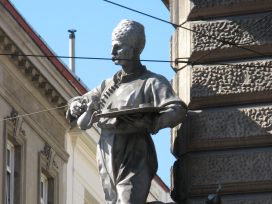
Vienna’s hosting of Ukrainian artists and writers recalls the days of the fin de siècle, when the city was a magnet for intellectuals seeking freedom from Tsarism. But despite strong historical affinities, subtle barriers to solidarity with the Ukrainian exiles remain.
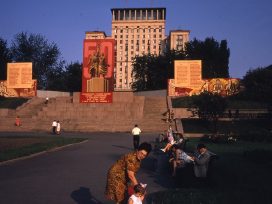
Prisoners of conscience
A conversation with Myroslav Marynovych
Defenders of human rights often face high stakes. When the Ukrainian Helsinki Group openly challenged the Soviet Union in the name of the 1975 Universal Declaration of Human Rights, young dissidents soon became political prisoners. The price for being a non-conformist was steep yet encouraged solidarity, paving the way to Euromaidan.
